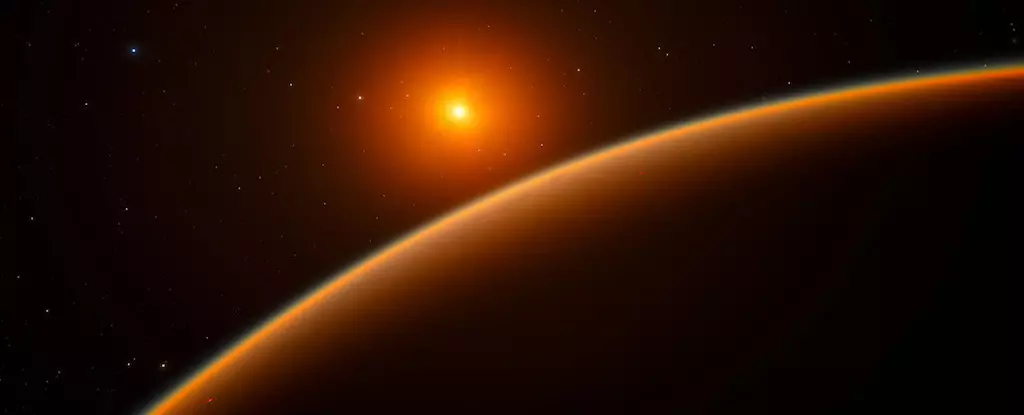Astronomers have recently made groundbreaking discoveries about the prevalence of Earth-like exoplanets within the vast expanse of the Milky Way galaxy. In an illuminating study led by Weicheng Zang, an astrophysicist at the Harvard and Smithsonian Center for Astrophysics, a surprising find was revealed: a super-Earth orbiting its star at a distance previously associated with much larger planets. This revelation is a game-changer in the search for diverse planetary systems beyond our own.
Super-Earths—planets that surpass Earth in size but remain smaller than Neptune—have been a focal point of exoplanet research. The newfound planet’s position in a region dominated by gas giants raises compelling questions about the formation and distribution of planetary bodies across the galaxy. Prior to this discovery, scientists only identified larger planets in these distant orbits, making it difficult to infer how many smaller, possibly habitable, worlds lie beyond their solar systems.
The Significance of Gravitational Microlensing
The study employed the sophisticated technique of gravitational microlensing, which occurs when a massive object, in this case, a star, transits between an observer and a distant light source. This phenomenon acts as a lens, magnifying the brightness of the background star—it’s akin to using a magnifying glass to focus sunlight. This rare but powerful method allows researchers to detect exoplanets that are otherwise difficult to observe, particularly those that are farther from their stars.
Zang and his team analyzed the microlensing event OGLE-2016-BLG-0007, which showcased the subtle yet revealing brightness changes from the planet’s host star. Their methodology incorporated data from the Korea Microlensing Telescope Network (KMTNet), providing a broader context for understanding the exoplanetary ecosystem within the Milky Way. Despite the challenges posed by the rarity of microlensing events, the researchers successfully increased the number of small exoplanets studied, tripling the previous totals and revealing a far richer variety of planetary sizes and orbits than previously documented.
Demographic Insights into Exoplanetary Systems
The findings suggest that the anticipated occurrence of super-Earths extends well beyond the tighter orbits around parent stars where they are typically found. Instead, they may inhabit regions akin to those surrounding Jupiter, fundamentally reshaping how scientists view planetary distribution in our galaxy. One of the most striking conclusions drawn from this study is the estimation that roughly one in three stars in the Milky Way could host a super-Earth ignoring traditional limits of their orbital ranges.
Co-author Andrew Gould, an astronomer at Ohio State University, emphasizes the significance of these results in the context of previous assumptions about planetary demographics. The study highlights that while abundant smaller planets overwhelmingly outnumber their larger counterparts, variations, and specific trends exist within this pattern. This nuanced understanding emphasizes the need for continued exploration and reevaluation of our assumptions regarding planetary formation.
A Broader Perspective on Planetary Formation
The research sheds light on the potential for diverse planetary systems that may not resemble our own Solar System. Co-author Youn Kil Jung from the Korea Astronomy and Space Science Institute suggests that the findings could hint at different formation processes at play in various stellar systems. The implications of this study extend beyond merely cataloging exoplanets; they probe fundamental questions regarding how planetary systems develop and evolve in distinct cosmic environments.
As researchers like Jennifer Yee emphasize, this expansion in understanding the population of planets—from those slightly larger than Earth to the enormous gas giants—indicates that the Milky Way is brimming with a variety of worlds waiting to be discovered. However, while these findings shine a light on the processes of planetary formation, they also highlight the gap in our knowledge regarding the nature of these super-Earths, particularly concerning their atmospheres and potential habitability.
The Challenges Ahead in Exoplanet Research
Despite the exciting discoveries, the task of locating these distant worlds is fraught with challenges. Co-author Richard Pogge points to the inherent difficulties in detecting microlensing events, with the detection of a planet amid such events being an even more complex endeavor. Collaborations utilizing advanced technology and robust observational networks, like those provided by the KMTNet, will be critical in our quest to map the myriad planetary systems scattered across the galaxy.
In essence, this revelation about the abundance of super-Earths within Jupiter-like orbits prompts renewed enthusiasm in astronomy. As we deepen our understanding of the cosmos, we inch closer to answering crucial questions about our place in it, and the potential for life beyond our own planet. The journey into the unknown continues, fueled by curiosity and the relentless pursuit of knowledge.


Leave a Reply